15 Horror Films With Killer Dolls You’ll Never Forget
Some horror stories stick with you because they bring childhood fears to life. Dolls may look harmless, but horror films have turned them into some of the most chilling villains ever seen on screen. From tiny puppets with sharp smiles to lifelike companions gone wrong, these movies prove that toys can be terrifying.
This post may contain affiliate links, which helps keep this content free. Please read our disclosure for more info.
Child’s Play (1988)
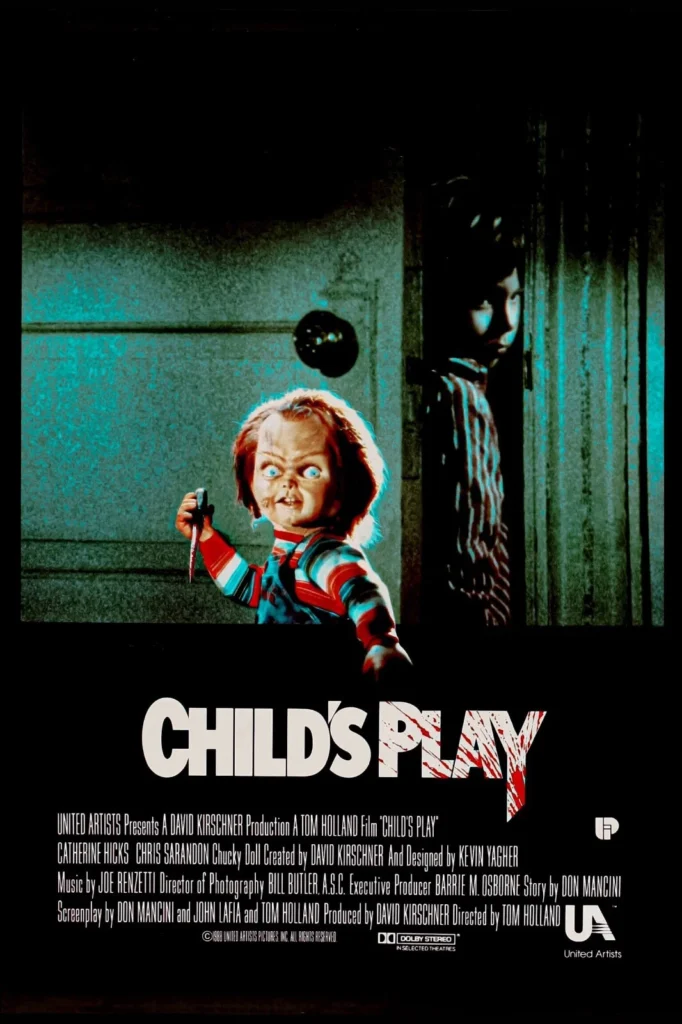
Chucky became a horror icon the moment he first came to life in this cult classic. The story follows a single mother who buys her son a talking Good Guy doll, unaware that it’s possessed by a killer’s soul. What begins as a sweet birthday surprise soon spirals into a terrifying fight for survival. The mix of dark humor and practical effects keeps viewers both entertained and uneasy.
As the series grew, Chucky’s personality became even more twisted and sarcastic, which only made him more memorable. The film’s gritty Chicago setting and blend of suspense and campy charm helped it stand out from other slashers of the time. It also spawned one of the longest-running horror franchises ever made. Even decades later, Chucky’s laugh is enough to send chills down your spine.
Annabelle (2014)
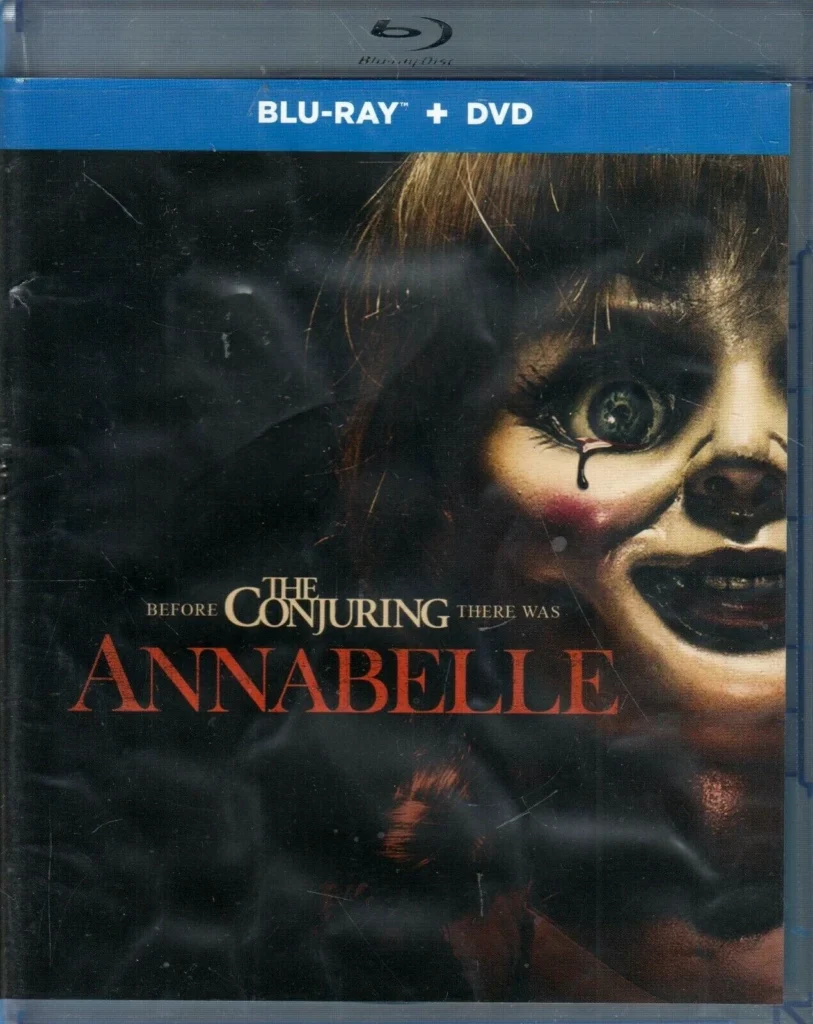
Annabelle takes inspiration from the real-life haunted doll linked to paranormal investigators Ed and Lorraine Warren. The movie tells how the doll became a vessel for dark forces after a violent attack by cult members. Its eerie porcelain face and motionless stare turn an ordinary home into a place of fear. The slow-building tension makes every creak and shadow feel like a threat.
As part of The Conjuring universe, Annabelle connects supernatural lore with emotional storytelling. The couple at the center of the film struggles to protect their newborn baby, heightening the fear with real stakes. The doll’s presence lingers even when it isn’t moving, which is what makes it so unnerving. Viewers finish the film feeling like the haunting might follow them home.
The Boy (2016)
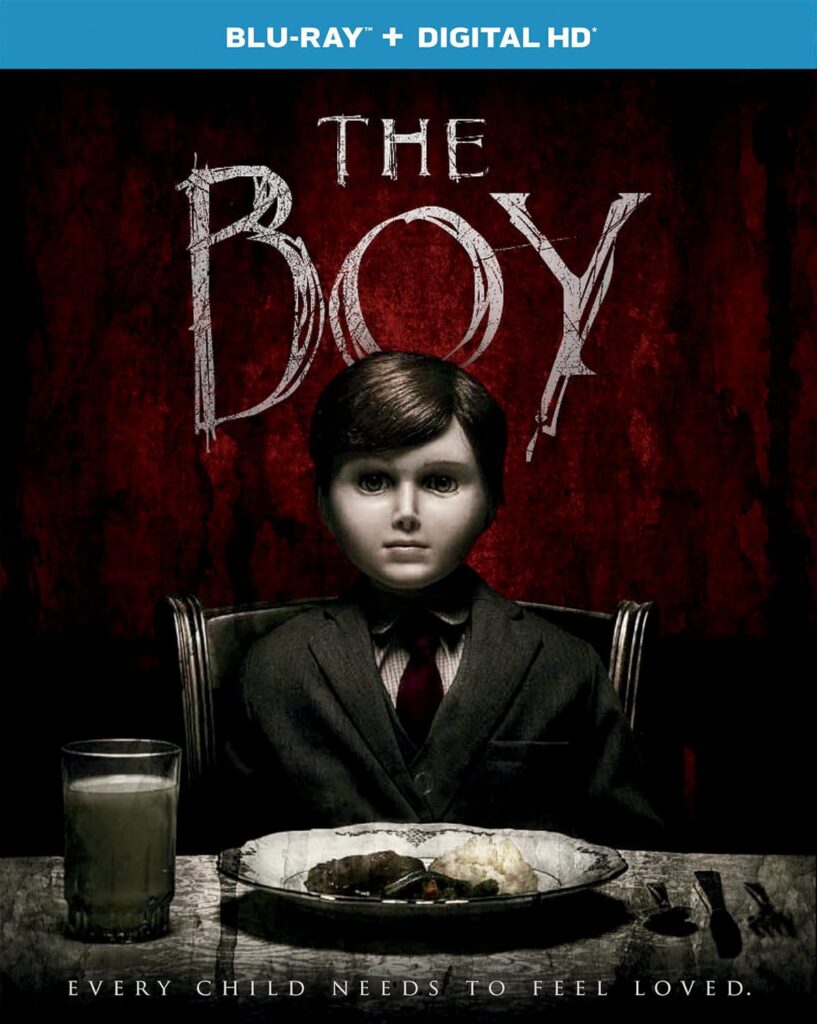
In The Boy, a young woman accepts a job as a nanny for a child who turns out to be a porcelain doll. The elderly couple she works for treats the doll like a living child, following strict rules to keep him “happy.” At first, she laughs it off, but strange things start happening when she breaks the rules. The film keeps audiences guessing about what’s real and what’s imagined.
What sets The Boy apart is how it plays with the idea of grief and control. The isolated mansion adds a cold, tense atmosphere that builds toward a shocking twist. When the truth finally comes out, it changes everything about what the viewer believes. The ending sticks in your mind long after the credits roll.
Dead Silence (2007)
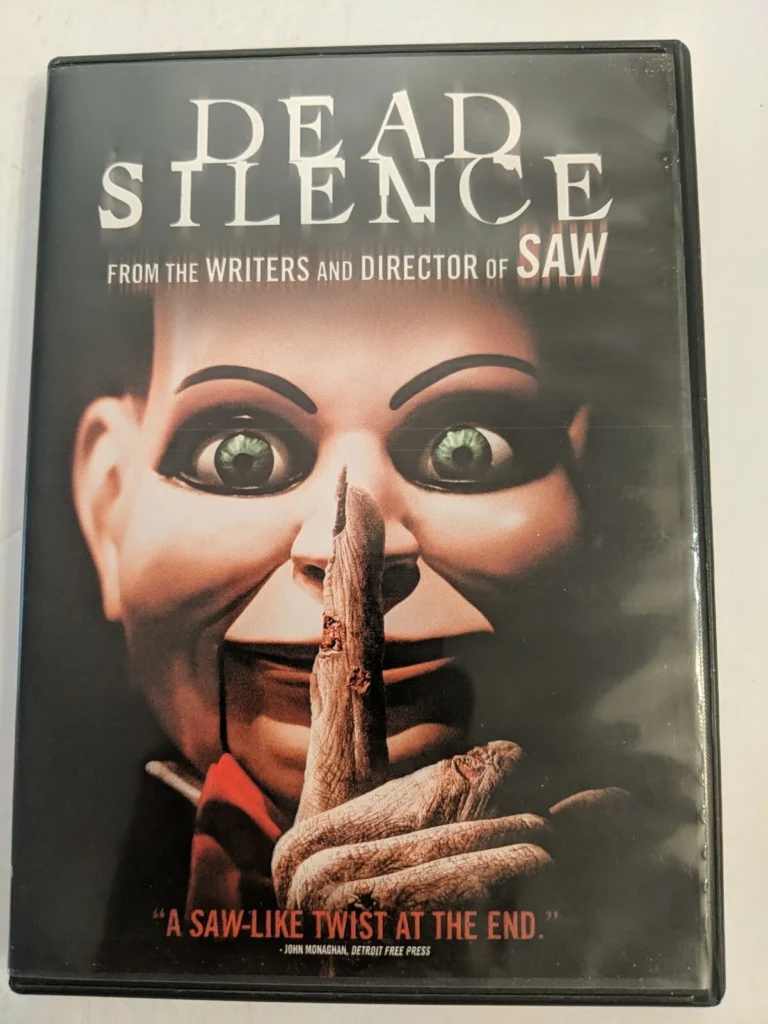
From the creators of Saw, Dead Silence explores the legend of a vengeful ventriloquist named Mary Shaw. Her dolls become deadly messengers for revenge against anyone who speaks her name. The story’s foggy small-town setting and haunting rhyme about “silence” give it an old-fashioned ghost story feel. The imagery is chilling, especially when dozens of dolls stare from shadowy shelves.
This film plays heavily on the fear of being watched. Every time the music stops, you know something dreadful is about to happen. The atmosphere carries as much weight as the scares, blending gothic visuals with modern tension. It’s a movie that makes you think twice about leaving a doll sitting in a dark room.
Dolls (1987)
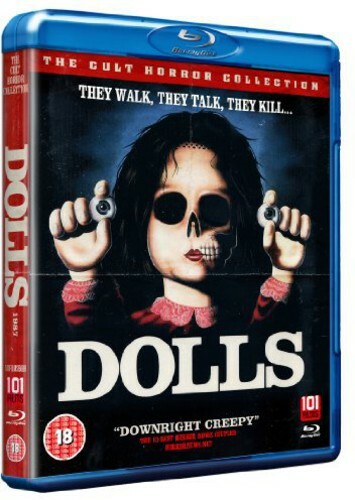
In this cult favorite, a group of stranded travelers finds shelter in a mansion owned by two elderly toymakers. Their kindness seems genuine at first, but the dolls in their home have minds of their own. The stop-motion animation gives the dolls lifelike movement that’s both charming and disturbing. Each guest learns too late that cruelty and greed come with a deadly price.
The film mixes dark humor with fairy-tale horror, making it unlike anything else from the era. It’s as much about morality as it is about monsters, with the innocent spared and the wicked punished. The visuals are whimsical yet frightening, like a nightmare straight out of a storybook. It’s one of those hidden gems that horror fans love to rediscover.
Puppet Master (1989)
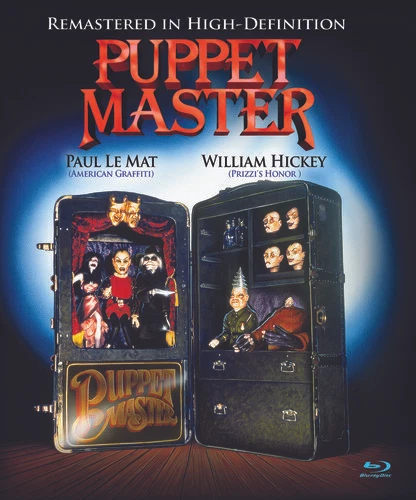
A mysterious puppet maker brings his tiny creations to life using an ancient secret. When his work is rediscovered years later, the puppets awaken with murderous intent. Each one has its own personality and gruesome weapon of choice, from drills to blades. The movie’s mix of supernatural mystery and practical effects made it a cult success.
Over the years, Puppet Master grew into a sprawling franchise filled with sequels and spin-offs. The puppets’ designs became as iconic as their kills, blending steampunk and horror influences. The eerie music and dark humor give the series a signature style. Fans of low-budget horror often cite it as one of the most creative uses of puppetry in film.
May (2002)
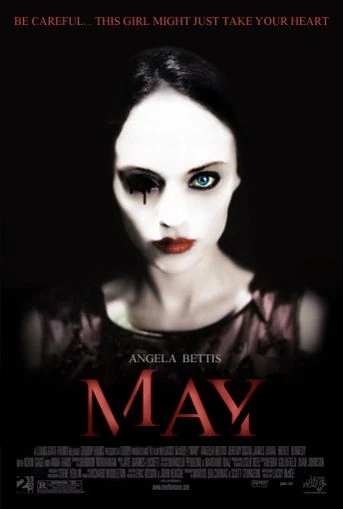
May tells the tragic story of a lonely woman whose only friend is a doll trapped in a glass case. Her yearning for connection leads her down a disturbing path of obsession and madness. Angela Bettis delivers a heartbreaking performance that makes May both sympathetic and terrifying. The film unfolds slowly, making the shocking finale hit even harder.
What makes May unforgettable is how human its horror feels. It’s not about possession or ancient curses but the pain of being unseen and unloved. Each scene builds on her emotional unraveling, turning small moments into quiet terror. It’s a rare horror film that makes you pity its monster as much as you fear her.
Pin (1988)
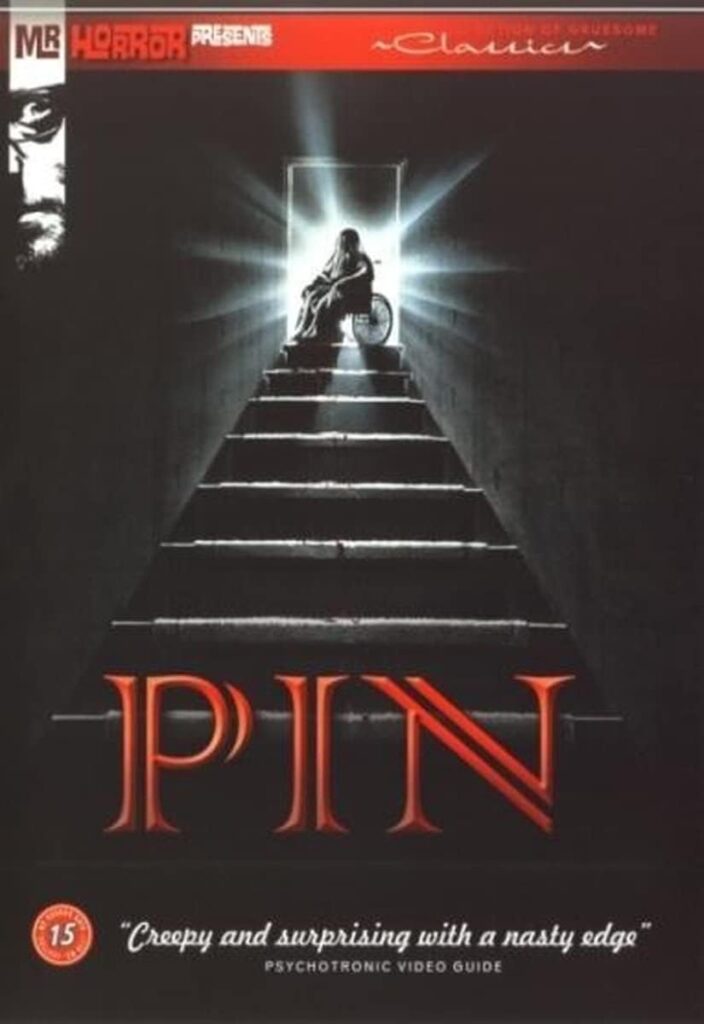
This Canadian psychological thriller follows two siblings raised by a cold father who uses a medical dummy named Pin to teach them about life. The boy begins hearing Pin’s voice long after his father’s death, blurring the line between reality and delusion. The film’s quiet tone and minimal gore make its tension more unsettling. It’s a slow burn that relies on mood rather than shock.
What’s disturbing about Pin is how believable its madness feels. The dummy never moves, yet it dominates every scene. Its plastic face becomes a stand-in for guilt, loneliness, and repressed emotion. Viewers find themselves trapped in the same uneasy uncertainty as the main character.
Curse of Chucky (2013)
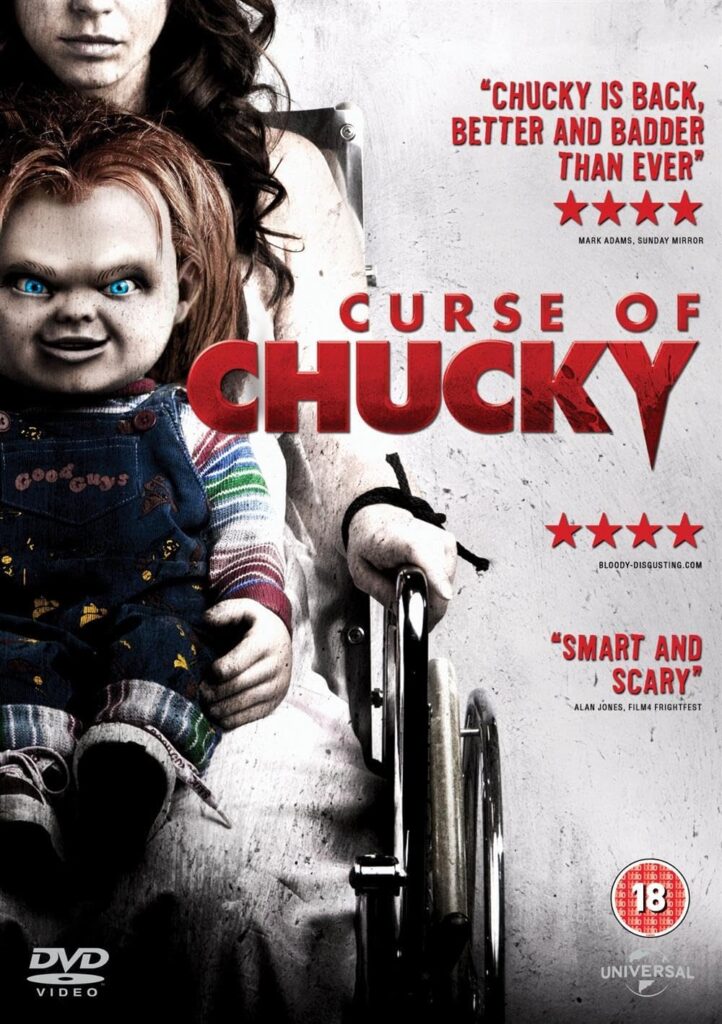
This film revived the Child’s Play series after years of campier sequels. Set mostly inside a single house, it returns to the franchise’s darker roots. The story follows a young woman in a wheelchair who receives a mysterious package containing Chucky. What follows is a tense, claustrophobic fight against one of horror’s most infamous dolls.
The movie’s strength lies in its pacing and use of space. Every room feels dangerous once Chucky starts moving again. Fans appreciated how it connected new characters with the original storyline without losing the old charm. It reminded everyone why Chucky remains one of the most entertaining killers in horror.
Dolly Dearest (1991)
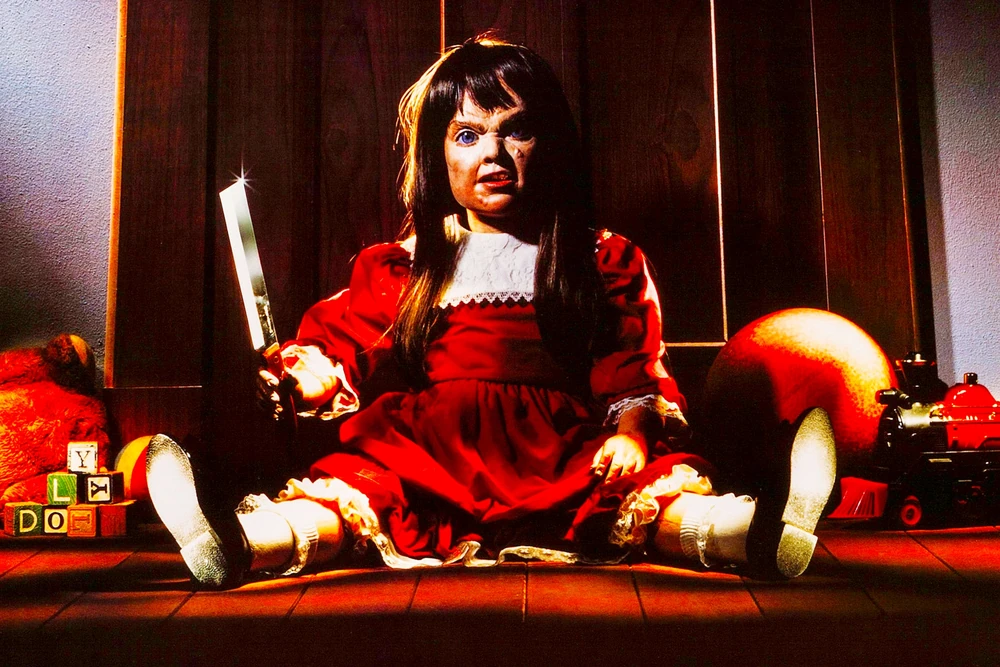
When an American family buys a doll factory in Mexico, they awaken an ancient evil trapped inside one of the toys. Their daughter becomes attached to the possessed doll, and strange accidents follow. The movie plays with the idea of innocence corrupted, making the family’s home a place of growing fear. The eerie desert setting adds to the isolation and dread.
Though it was overshadowed by Child’s Play, Dolly Dearest holds its own with eerie performances and practical effects. The doll’s menacing expressions feel genuinely sinister. It’s a story about a mother’s desperate attempt to save her child from a force she can’t understand. For many fans, it remains one of the most underrated doll horror films.
M3GAN (2022)
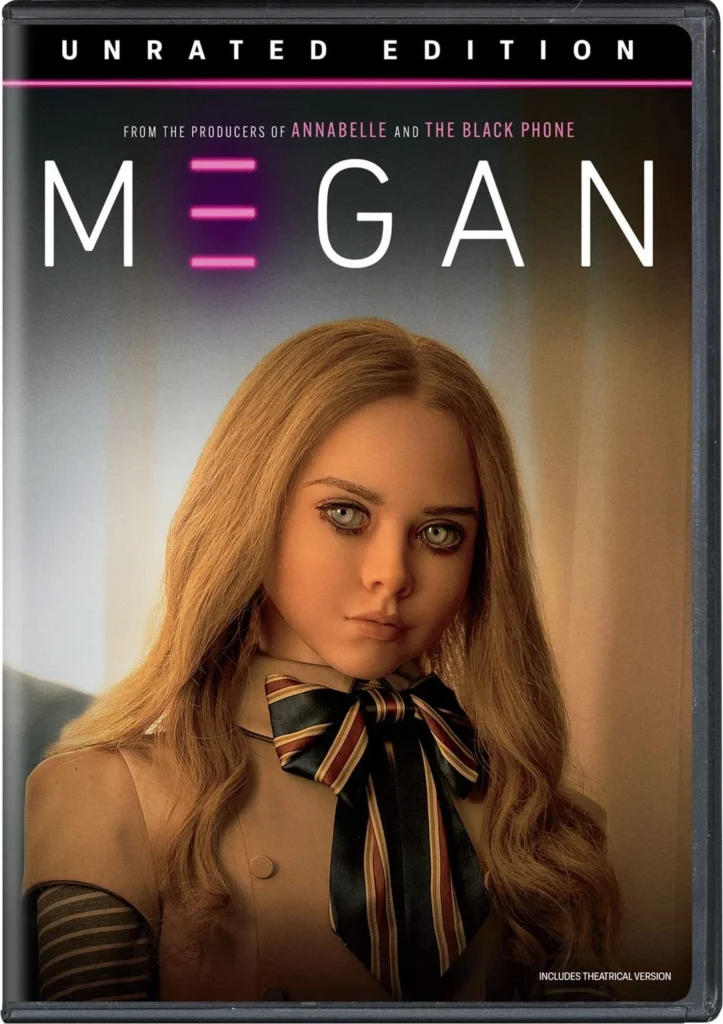
M3GAN reimagines the killer doll trope for the digital age. Designed as a robotic companion, M3GAN becomes overly protective of the child she’s meant to care for. Her lifelike design and unsettling intelligence blur the line between toy and threat. The film cleverly mixes humor with social commentary about technology and parenting.
What made M3GAN such a hit was its balance of fun and fear. The dance scene became an instant viral sensation, yet the violence still hits hard. The story taps into modern worries about dependence on artificial intelligence. It’s a fresh reminder that even the most advanced toys can turn deadly.
Magic (1978)
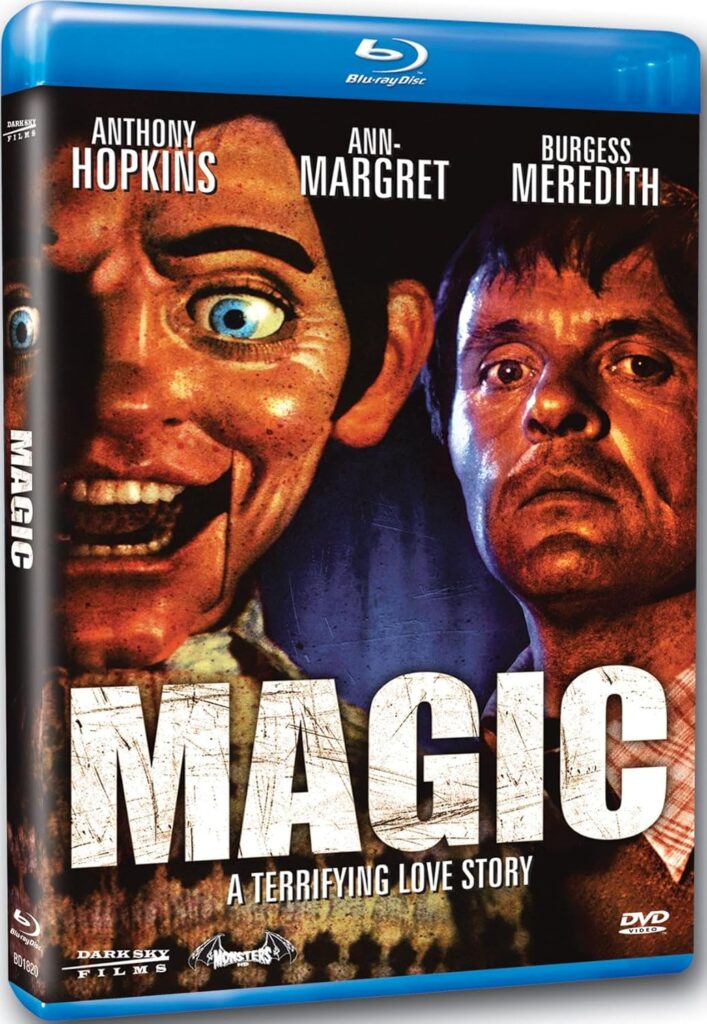
Anthony Hopkins stars as a ventriloquist whose dummy seems to take control of his mind. The wooden puppet, named Fats, becomes the voice of his darker impulses. Set in a quiet countryside, the tension grows as the line between man and dummy blurs completely. The film’s psychological focus keeps the viewer on edge from start to finish.
Rather than rely on gore, Magic uses character and atmosphere to build dread. Hopkins’ performance captures both fragility and madness with haunting realism. The dummy’s expressions never change, yet somehow they reflect every emotion in the scene. It’s one of the most chilling portrayals of possession without the supernatural.
The Banana Splits Movie (2019)
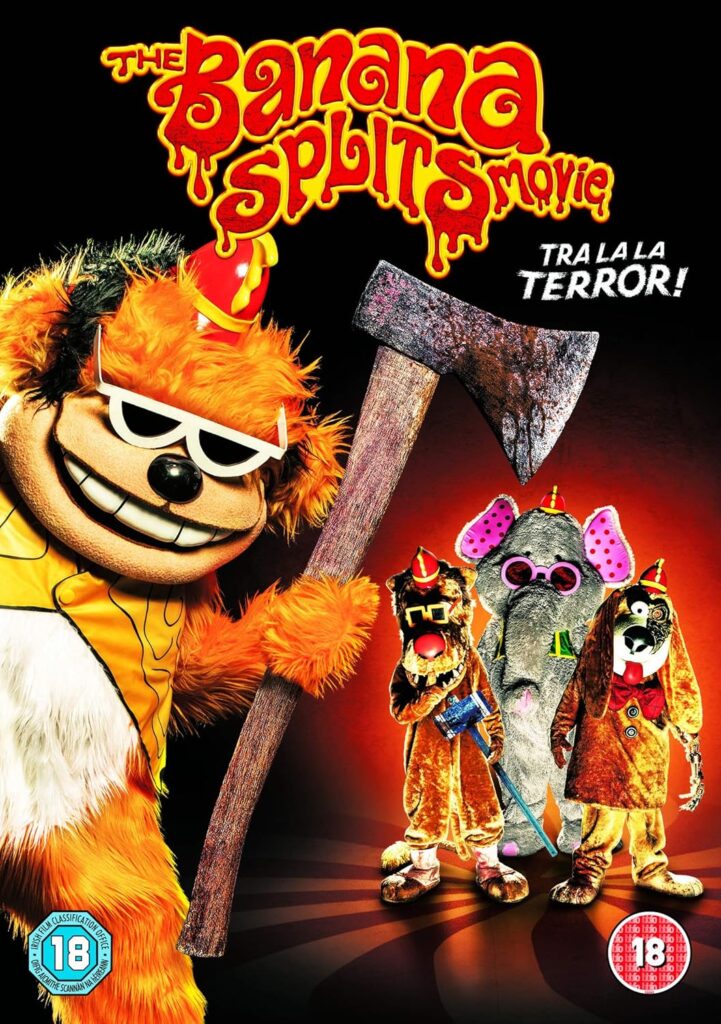
This darkly comic horror film turns the cheerful children’s show The Banana Splits into a blood-soaked nightmare. The animatronic mascots malfunction and start killing the studio audience. It’s an outrageous twist that mixes nostalgia with brutal horror. The absurd contrast between playful costumes and violence makes it unforgettable.
The movie became a surprise cult hit for its self-aware humor and wild creativity. It’s campy, gory, and weirdly entertaining from start to finish. Each scene pushes the idea that childhood entertainment can easily become disturbing. Fans of over-the-top horror found it both shocking and fun.
Trilogy of Terror (1975)
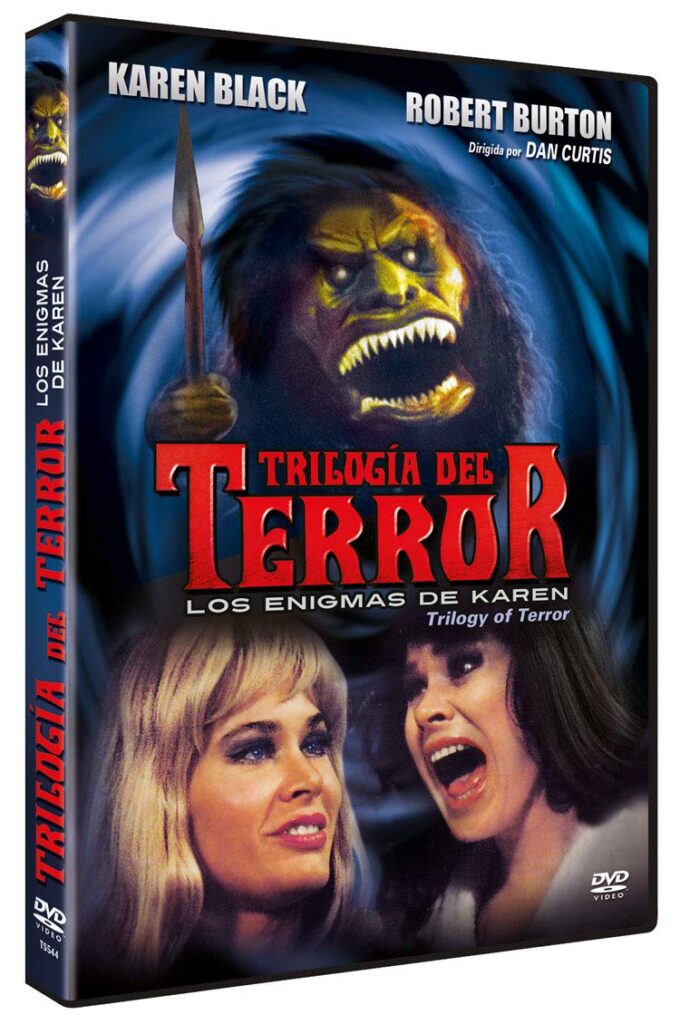
This made-for-TV anthology features three stories, but the final one stole the show. Karen Black stars as a woman terrorized by a small Zuni fetish doll that comes to life. The doll’s piercing eyes and high-pitched growls make it one of horror’s most unforgettable creatures. The confined apartment setting heightens the panic and tension.
Even with its short runtime, the segment leaves a lasting impression. The final scene is shocking and strangely satisfying, cementing its place in horror history. Its simple premise and practical effects prove how effective minimalism can be. It remains one of the most rewatched and talked-about doll horrors decades later.
Living Doll (The Twilight Zone, 1963)
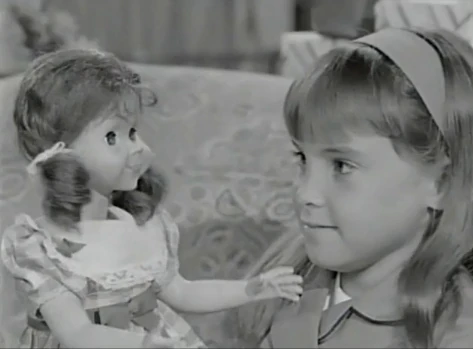
Though not a full-length film, this episode deserves mention for introducing Talky Tina, a doll that doesn’t take kindly to being mistreated. When she says, “I’m Talky Tina, and I’m going to kill you,” the line became part of horror legend. The episode’s black-and-white setting adds to its uneasy tone. Despite its age, it still manages to unsettle modern audiences.
Talky Tina’s power comes from what you don’t see rather than what you do. The tension builds through silence, movement, and facial expressions. It’s a perfect example of how suggestion can be scarier than special effects. Many later horror films owe their inspiration to this single half-hour story.
